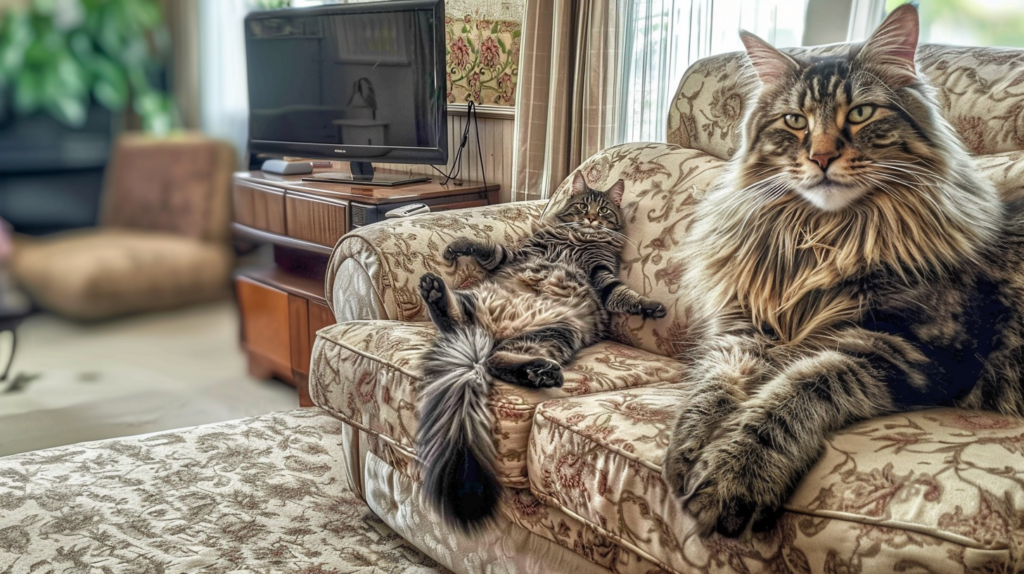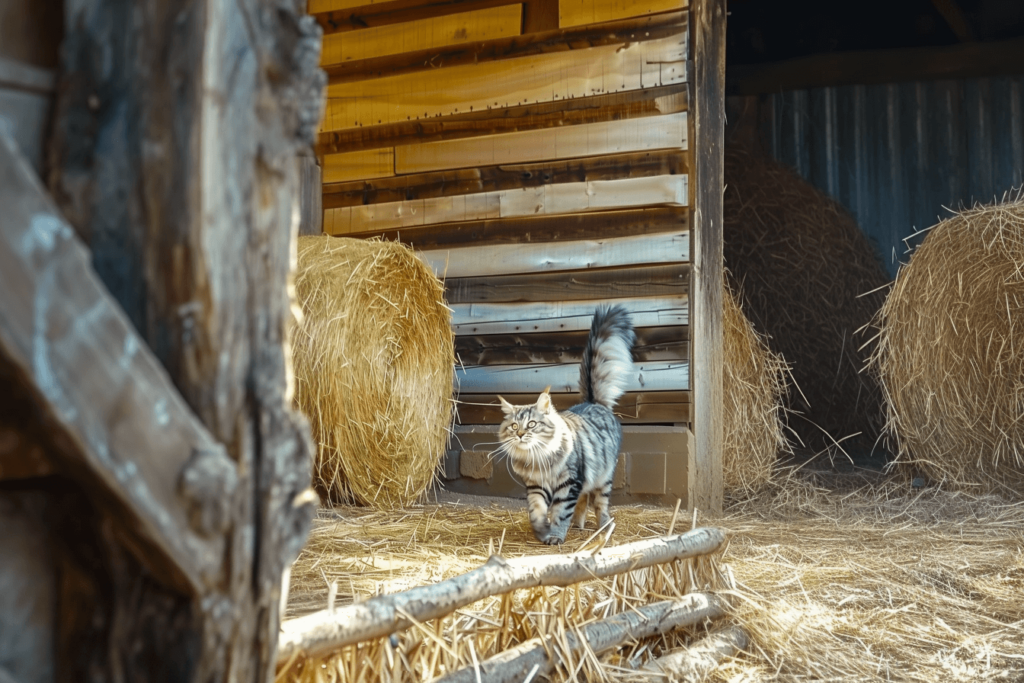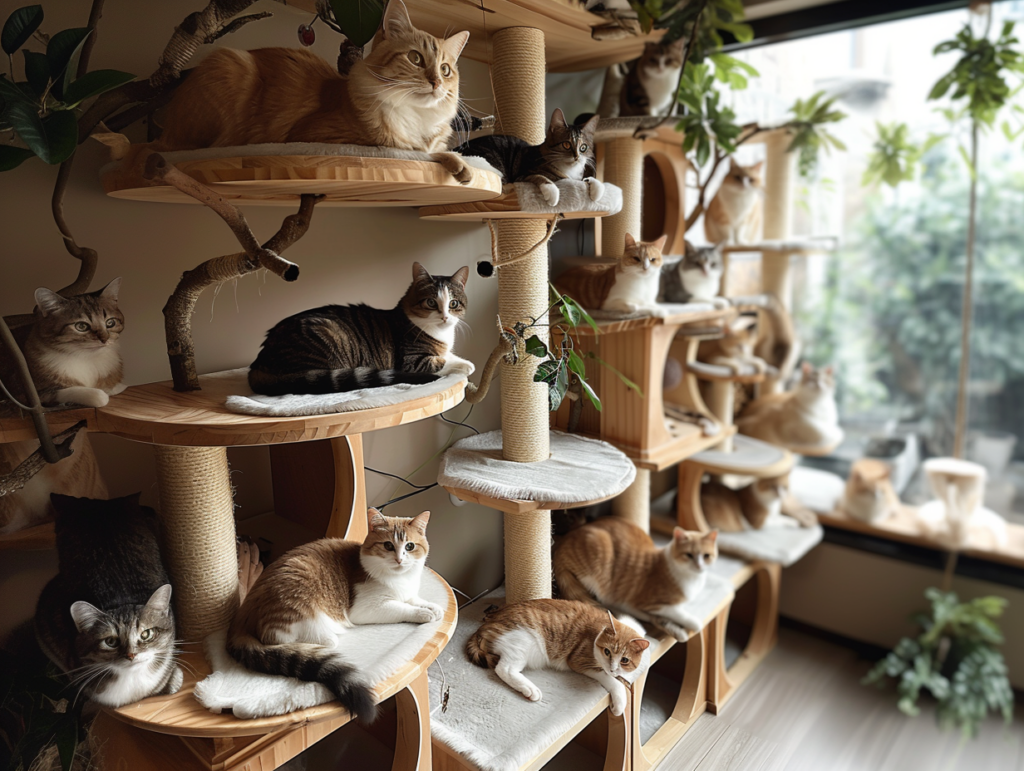Cat Behavior

Key Takeaways
| Topic | Summary |
|---|---|
| Body Language | Cats use body language to communicate their feelings and intentions. |
| Vocalizations | Different sounds such as meowing, purring, and hissing convey various messages. |
| Grooming | Grooming behaviors indicate self-care, affection, or stress. |
| Scratching | Scratching is a natural behavior for marking territory and maintaining claws. |
| Hunting and Playing | Hunting and playing are instinctual behaviors that provide exercise and mental stimulation. |
| Social Behaviors | Social interactions vary, with some cats being more social than others. |
| Territorial Marking | Cats mark their territory through spraying and rubbing. |
| Eating Habits | Eating behaviors can indicate preferences, health issues, or emotional states. |
| Sleeping Patterns | Cats have unique sleeping patterns, often sleeping for long periods. |
Body Language
Understanding cat body language is crucial for interpreting their feelings and intentions. Cats use various postures, facial expressions, and movements to communicate. For example, a relaxed cat with a raised tail and slightly closed eyes is generally content. In contrast, an arched back, fluffed fur, and hissing indicate fear or aggression.
Learn more about cat behavior at Cat Behavior.
Vocalizations
Cats use a range of vocalizations to express themselves. Here are some common sounds and their meanings:
- Meowing: Typically used to communicate with humans, meows can vary in pitch and intensity to convey different needs or emotions.
- Purring: Often a sign of contentment, but can also indicate pain or discomfort.
- Hissing: Indicates fear, aggression, or discomfort.
- Chirping/Chattering: Usually seen when a cat is watching birds or other prey, indicating excitement or frustration.
Grooming
Grooming is an essential part of a cat’s daily routine. It helps them stay clean and regulate their body temperature. Additionally, cats groom each other as a sign of affection and bonding. However, excessive grooming can indicate stress or health issues. Observing your cat’s grooming habits can give you insights into their emotional and physical well-being.

For more on maintaining your cat’s well-being, visit Cat Health and Wellness.
Scratching
Scratching is a natural behavior that serves multiple purposes, including marking territory, stretching muscles, and maintaining claw health. Providing appropriate scratching posts can prevent damage to furniture and satisfy this instinctual need. Different cats have different scratching preferences, so offering a variety of scratching surfaces can help keep your cat happy.
Learn how to manage scratching behavior at Cat Training.
Hunting and Playing
Hunting and playing are instinctual behaviors that provide cats with necessary physical exercise and mental stimulation. Toys that mimic prey, such as feather wands or laser pointers, can engage a cat’s hunting instincts and keep them active. Regular play sessions can also help reduce unwanted behaviors caused by boredom or excess energy.

For tips on enriching your cat’s environment, visit Cat Toys and Enrichment.
Social Behaviors
Cats display a range of social behaviors, from independent and solitary to highly social and affectionate. Understanding your cat’s social preferences can help you create a comfortable and stress-free environment for them. Some cats may enjoy the company of other pets or humans, while others prefer solitude. Observing your cat’s behavior will help you determine their social needs.
Explore more about social interactions in cats at Cat Behavior.
Territorial Marking
Cats are territorial animals and use behaviors such as spraying urine or rubbing their scent glands on objects to mark their territory. This behavior helps establish boundaries and communicate with other cats. If territorial marking becomes a problem, it may be necessary to address underlying issues such as stress or the presence of other animals.
Learn how to address territorial marking at Indoor vs. Outdoor Cats.
Eating Habits
A cat’s eating habits can reveal much about their health and emotional state. Sudden changes in appetite or eating behavior may indicate underlying health issues or stress. It’s important to monitor your cat’s eating patterns and consult a veterinarian if you notice any significant changes. Providing a balanced diet tailored to your cat’s needs is crucial for their well-being.

For guidance on proper feline nutrition, visit Cat Nutrition.
Sleeping Patterns
Cats are known for their unique sleeping patterns, often sleeping up to 16 hours a day. They have a polyphasic sleep pattern, meaning they sleep in multiple short periods throughout the day and night. Understanding these patterns can help you accommodate their needs and ensure they have a comfortable sleeping environment. Providing cozy and quiet sleeping areas can help your cat feel secure and rested.

By understanding these common cat behaviors, you can better meet your cat’s needs and foster a strong bond with your feline friend. Observing and responding to your cat’s behaviors appropriately can lead to a happier and healthier life for both you and your pet.
For more insights into various aspects of cat care, explore topics like Cat Behavior, Cat Health and Wellness, and Cat Nutrition.